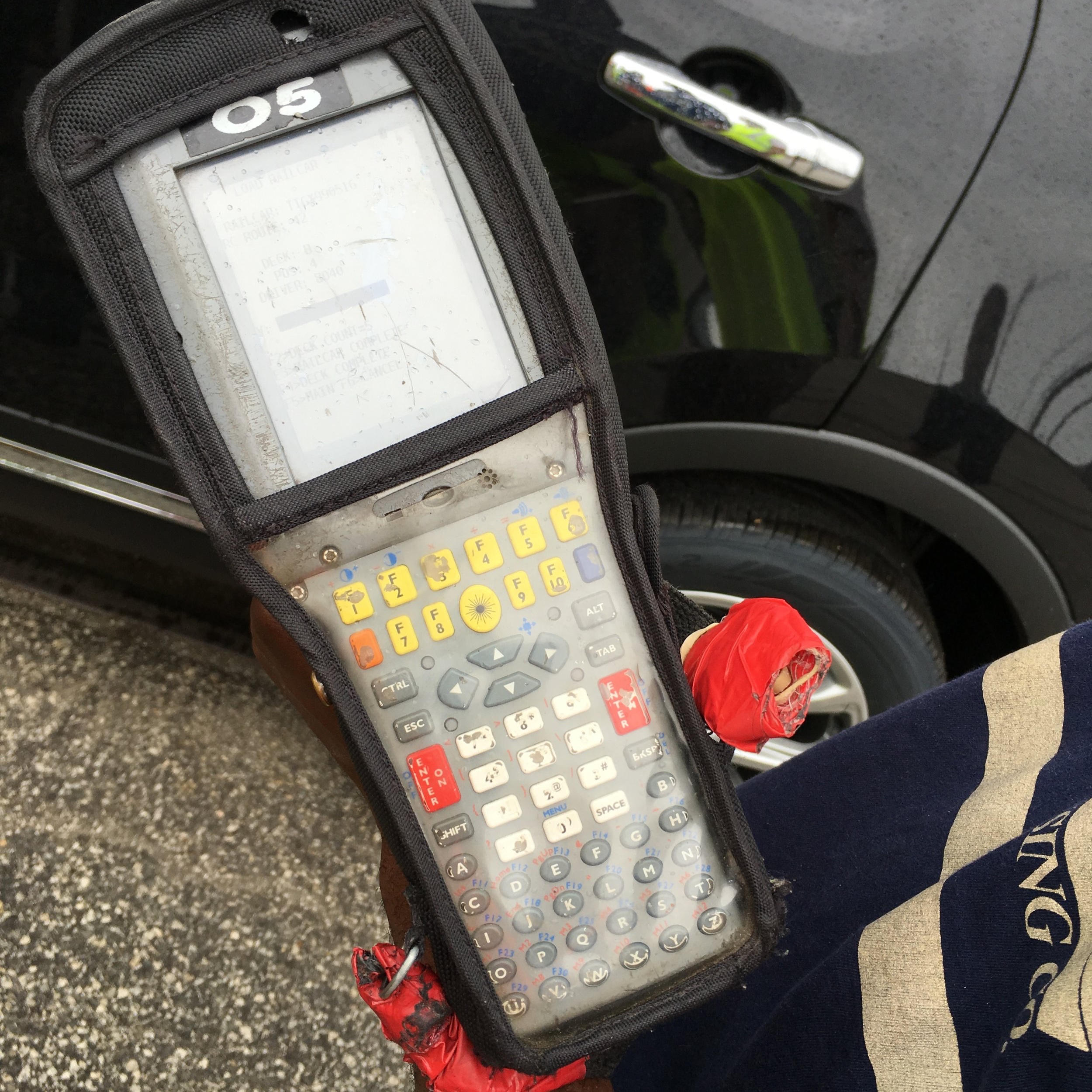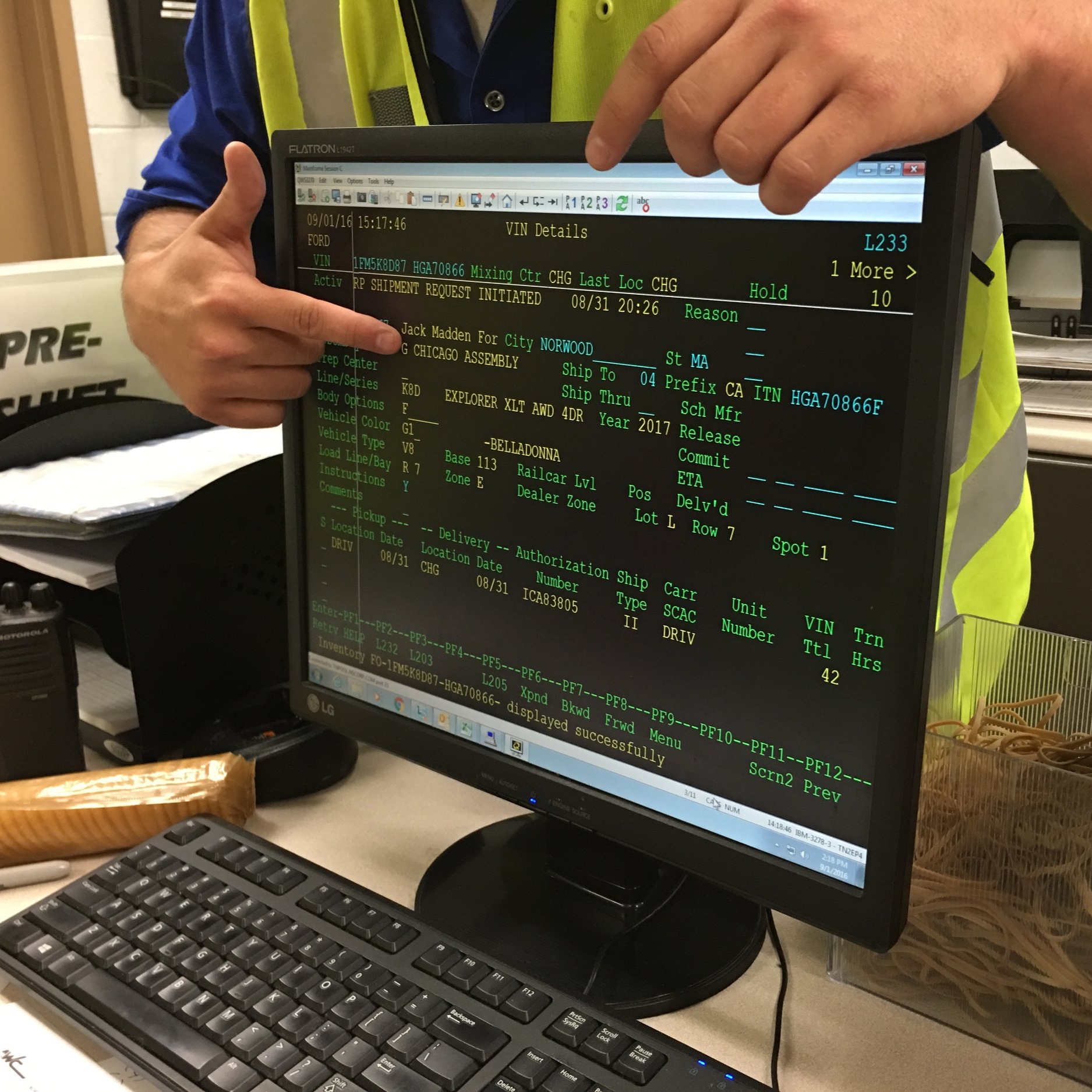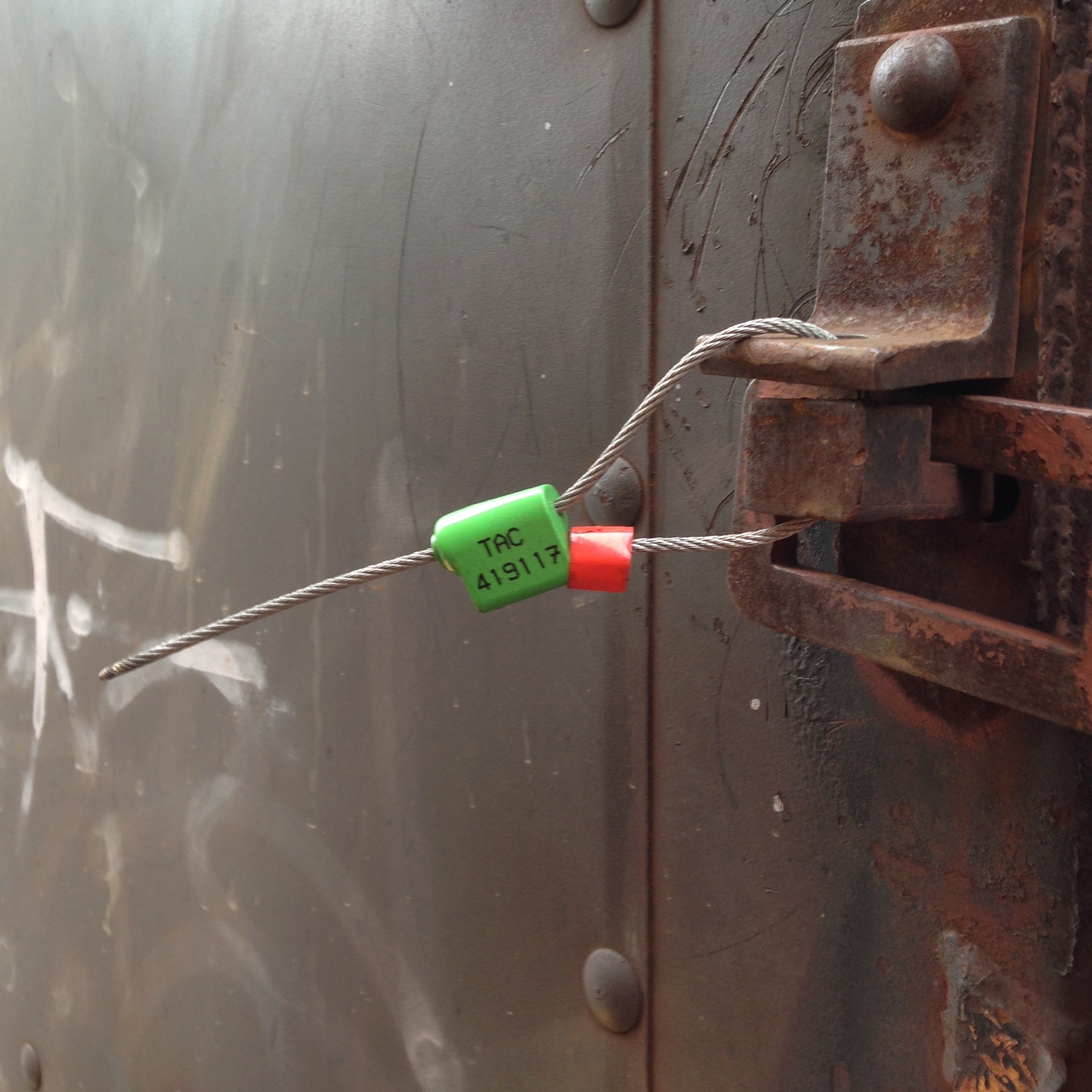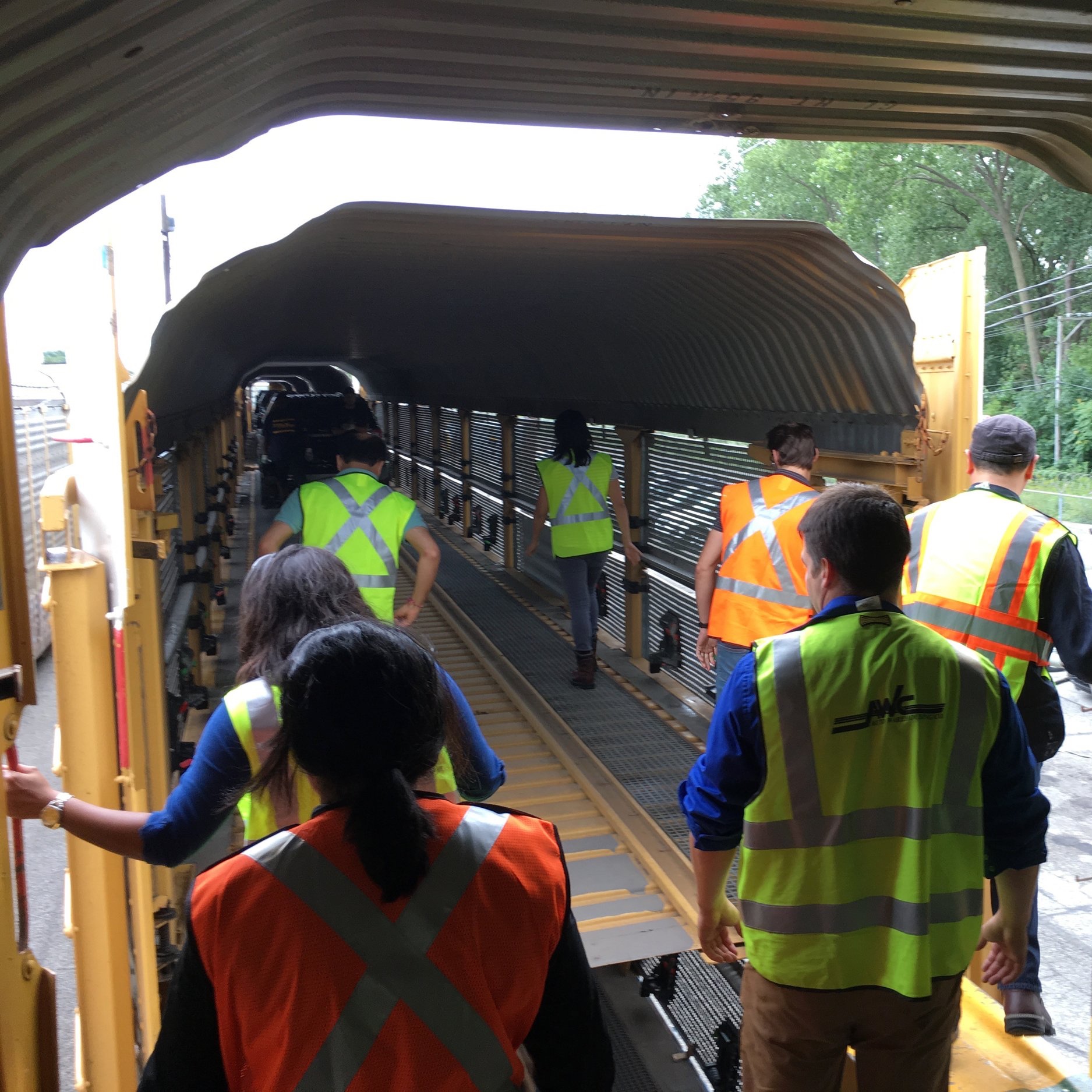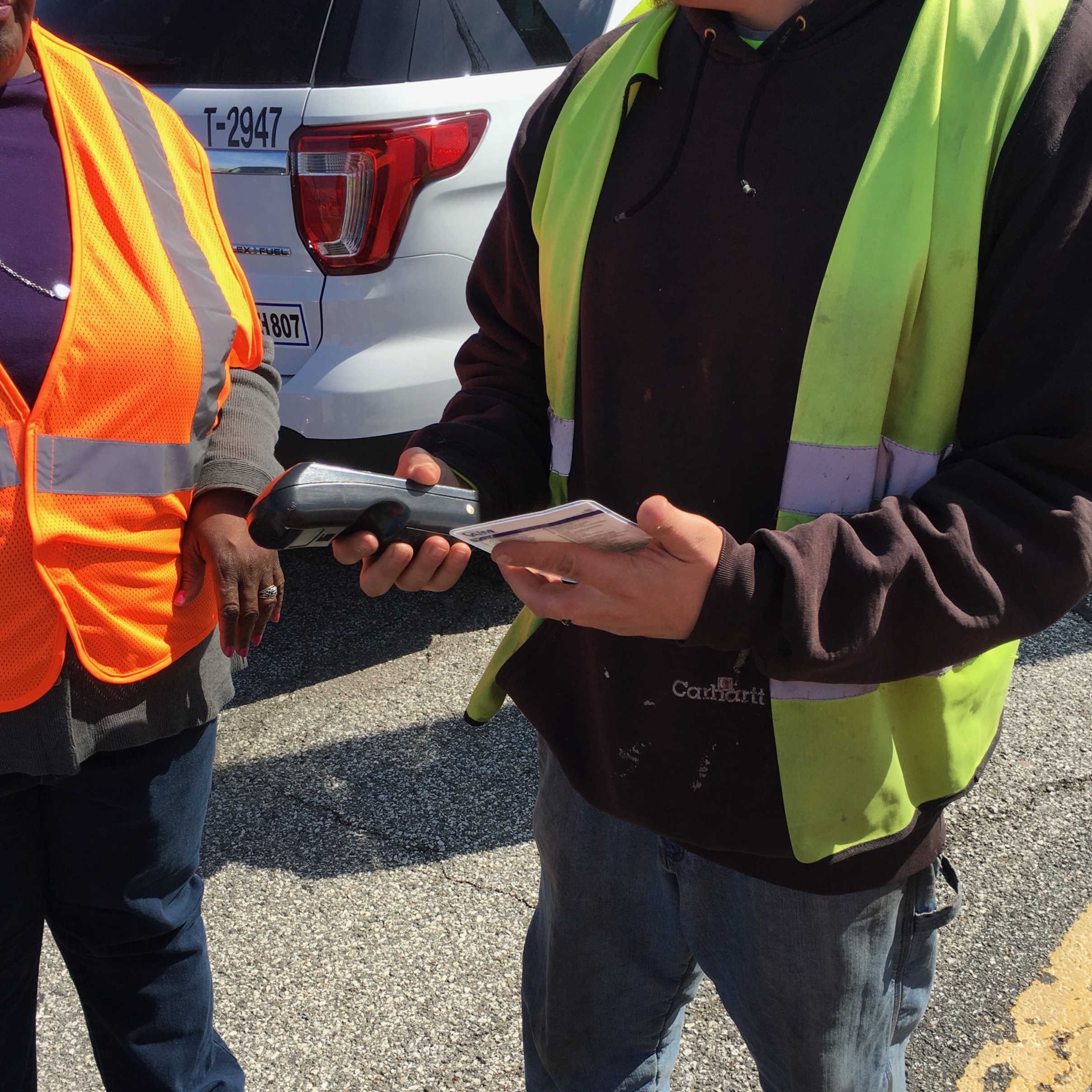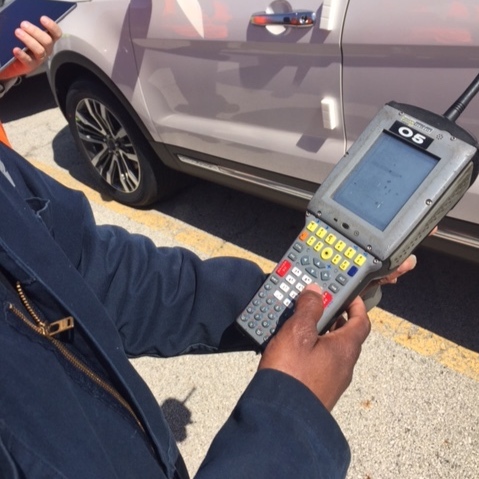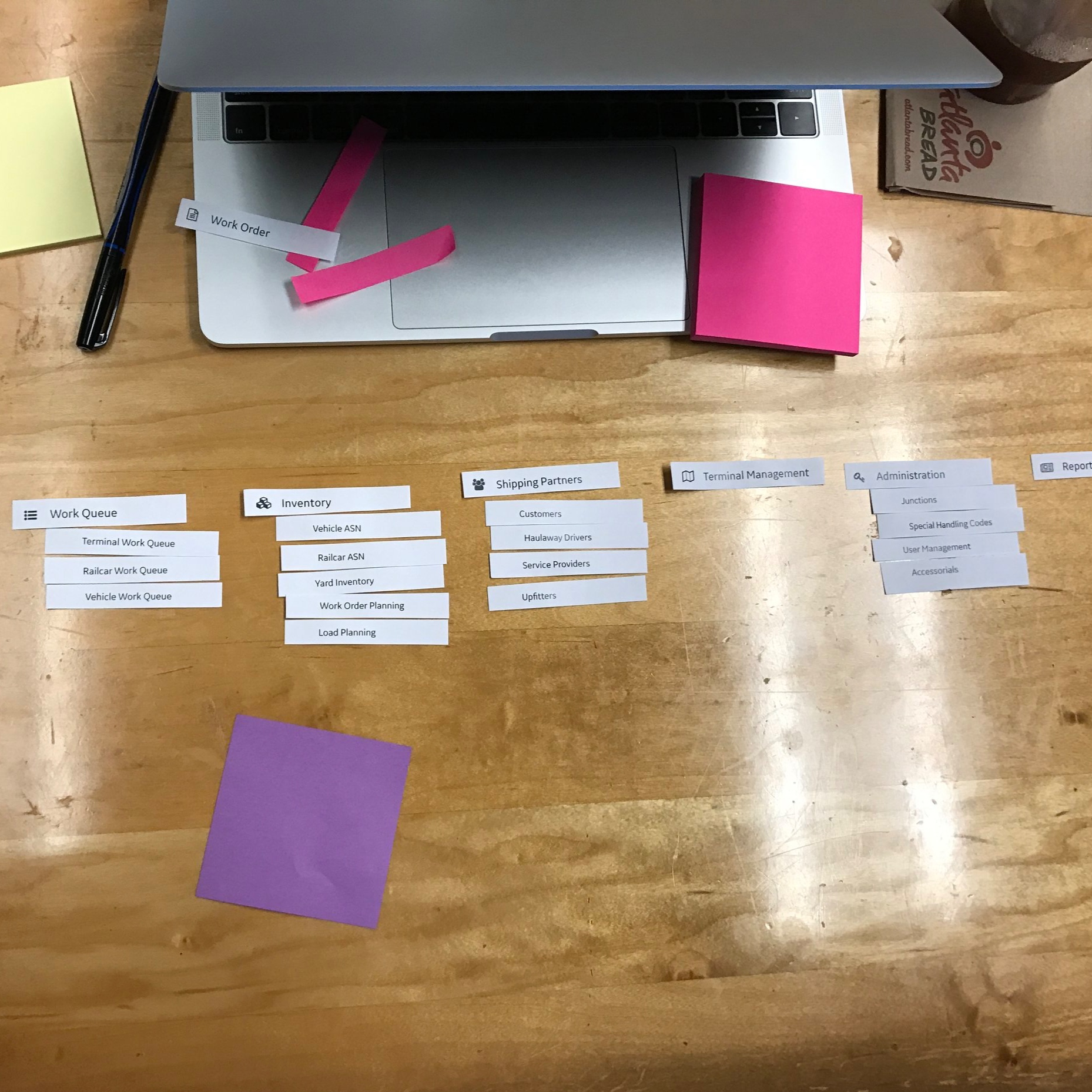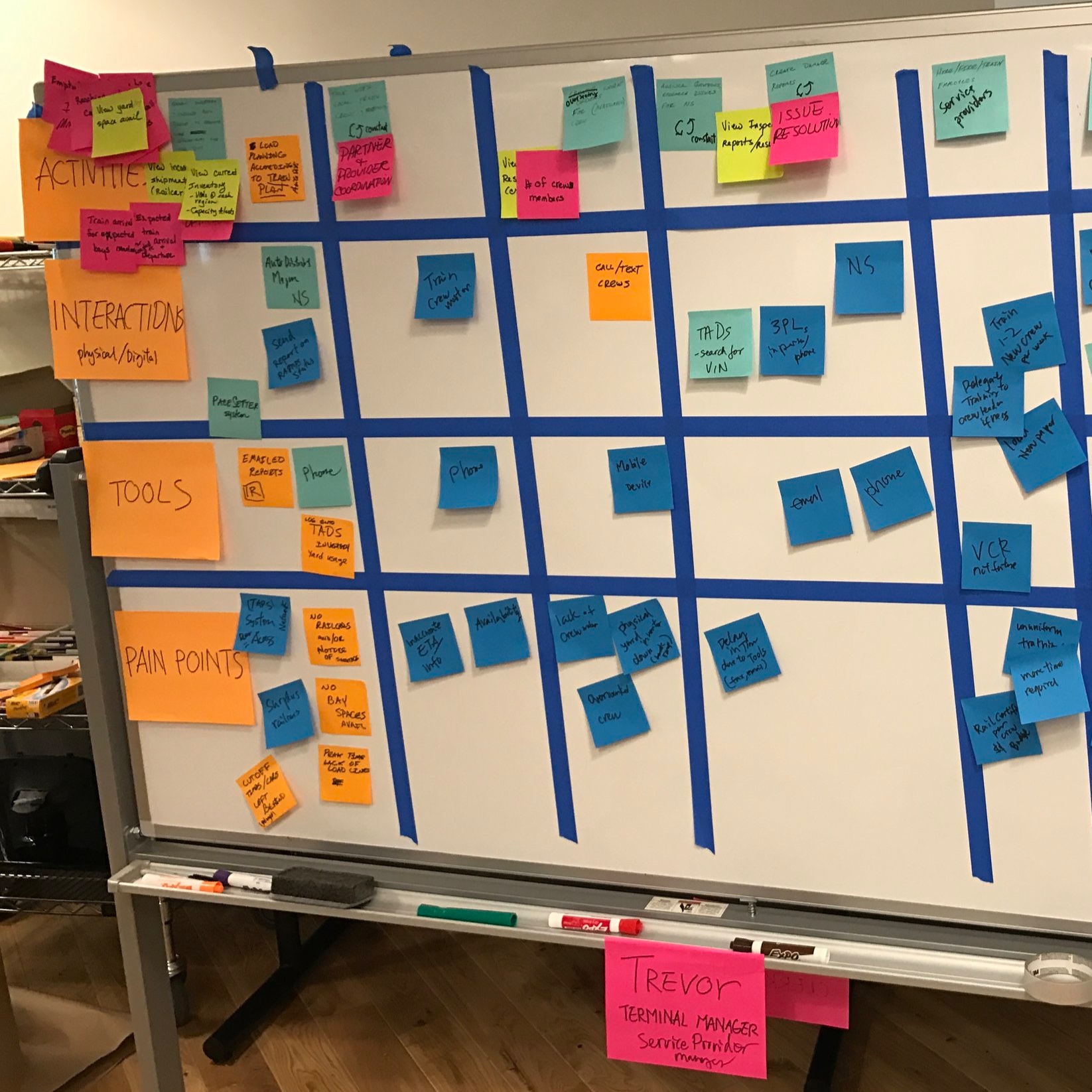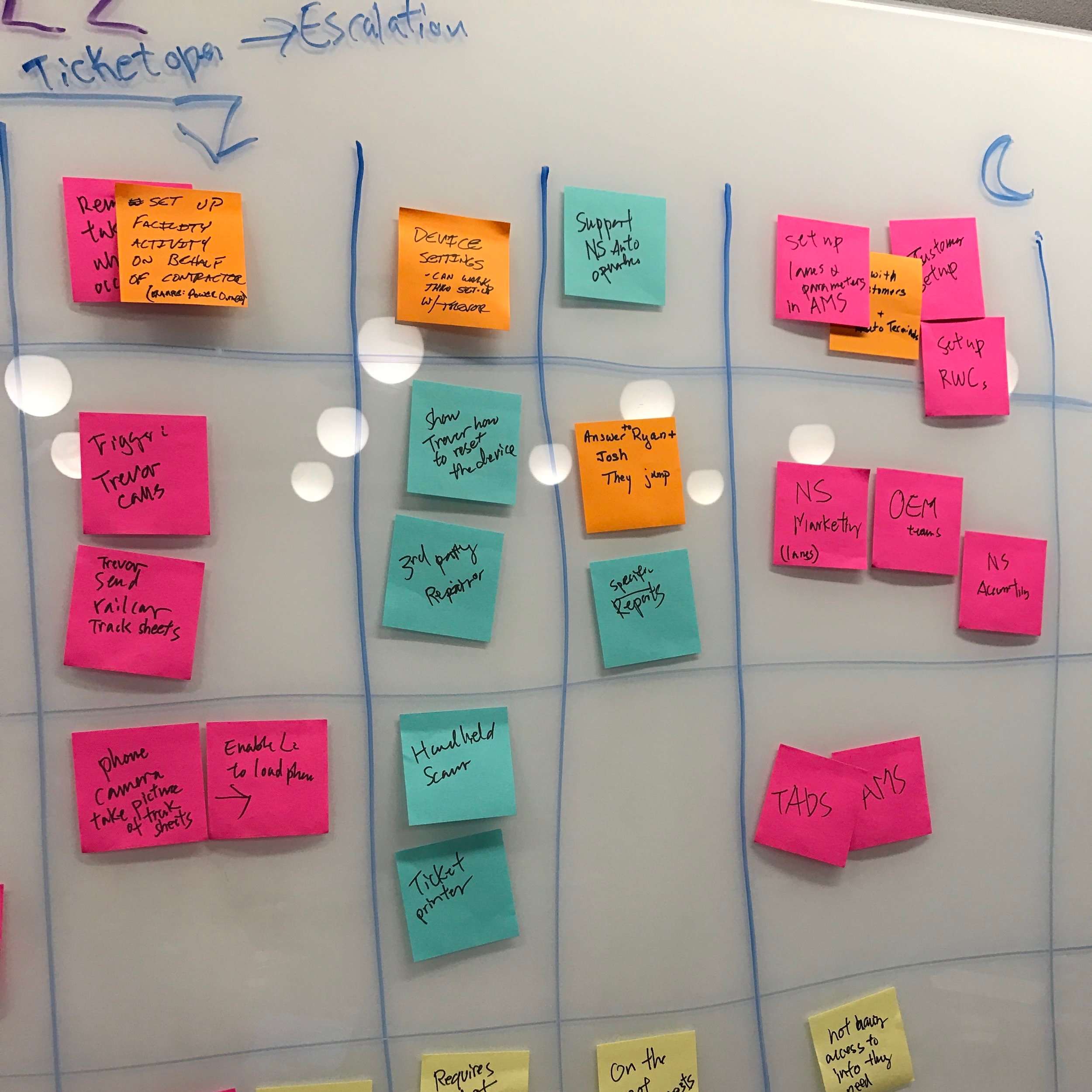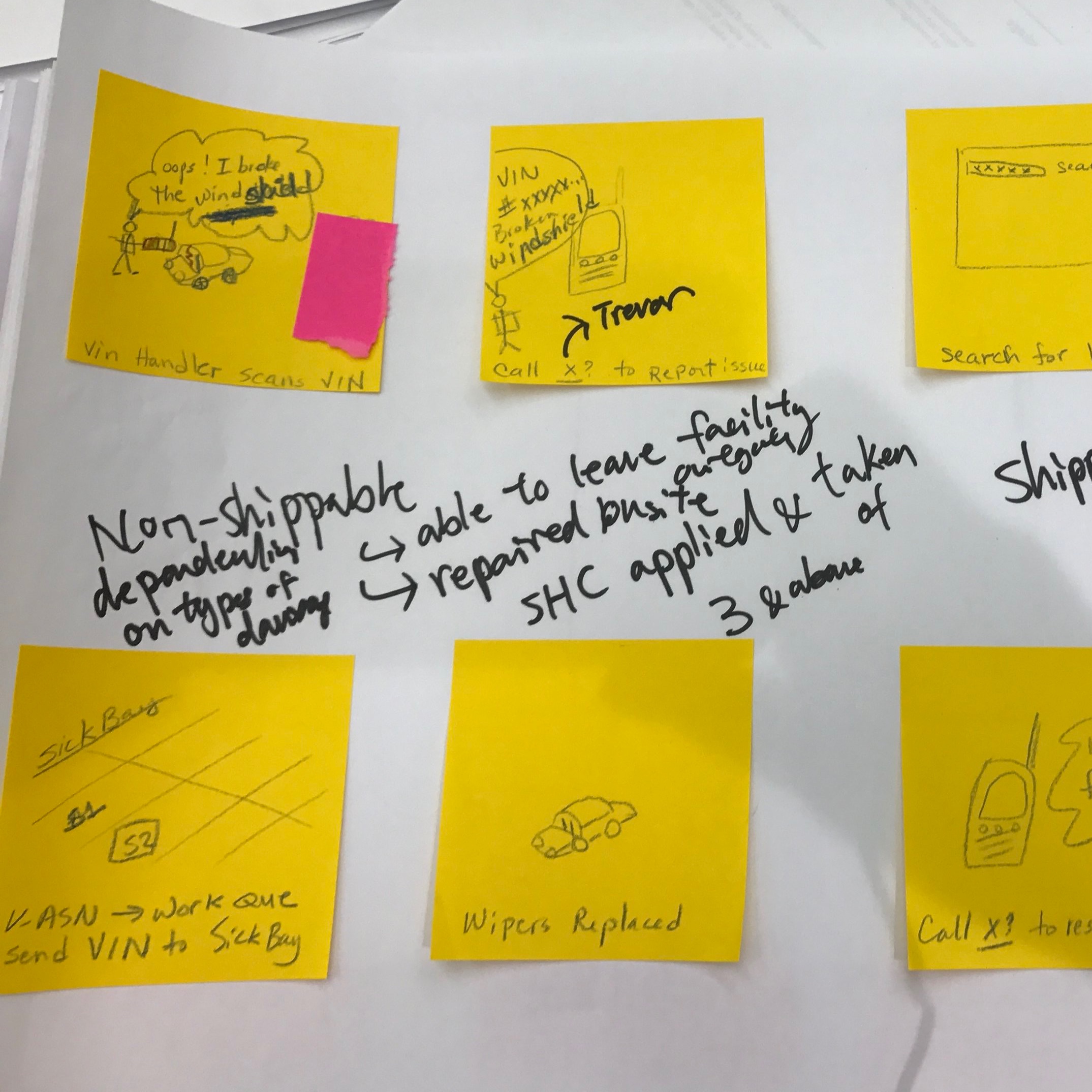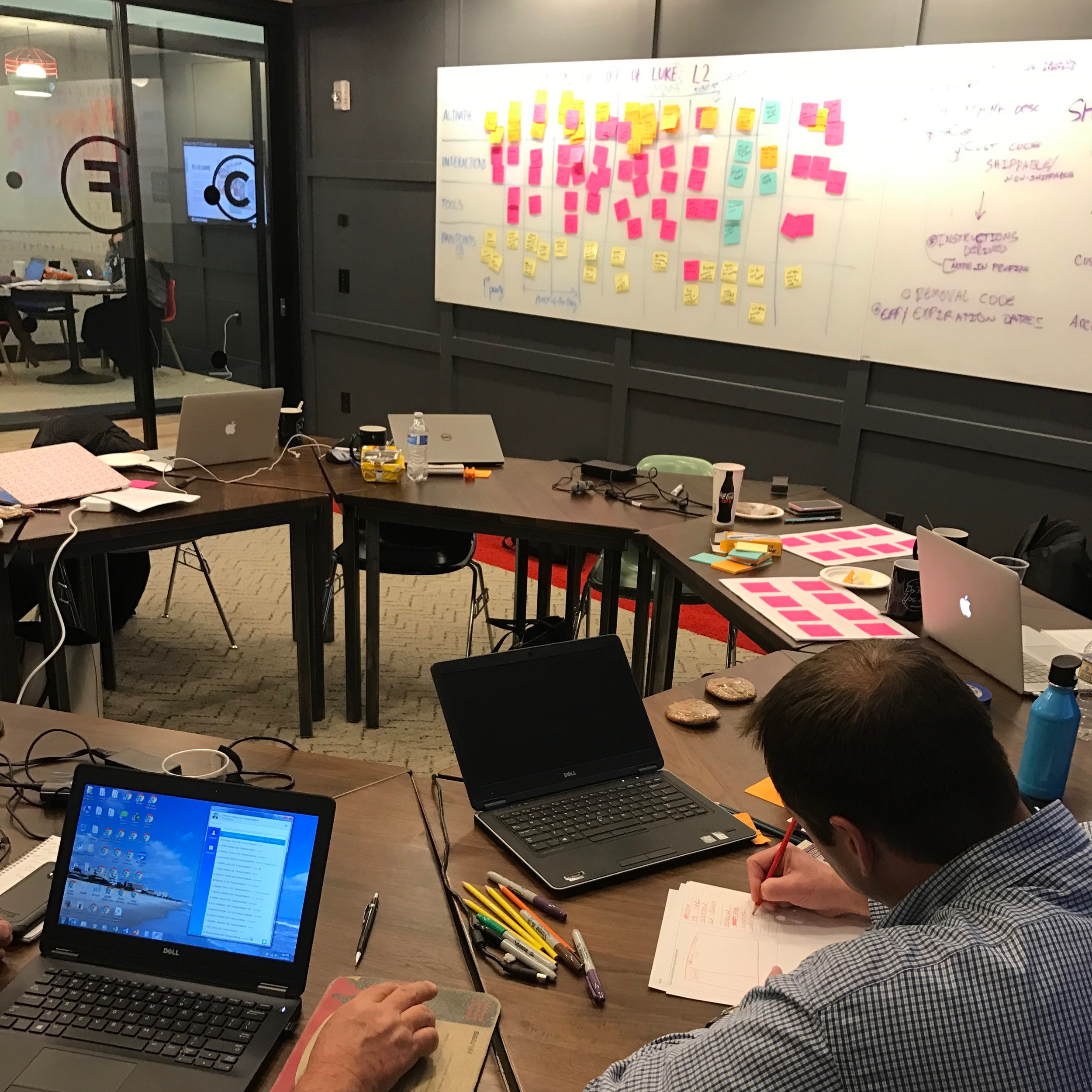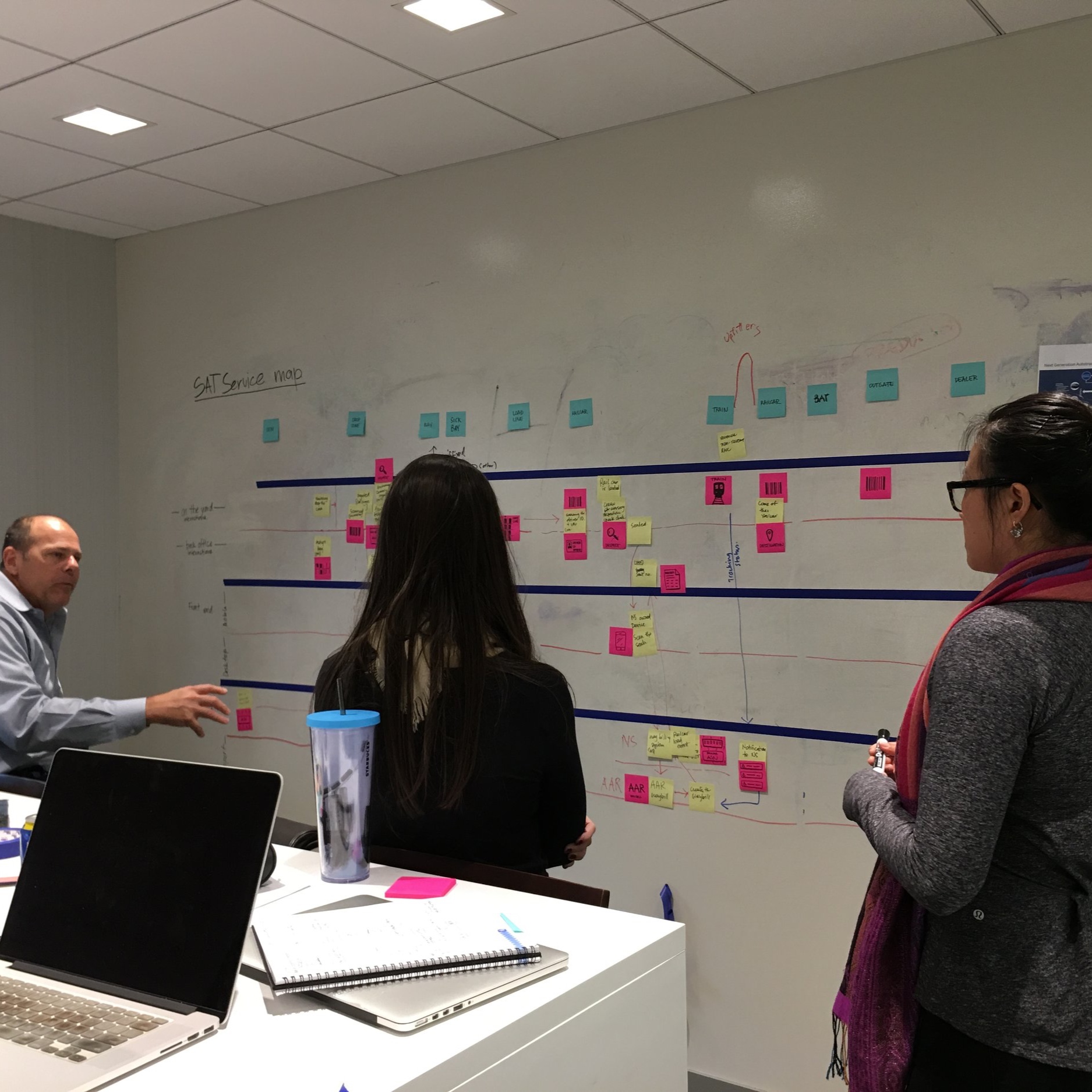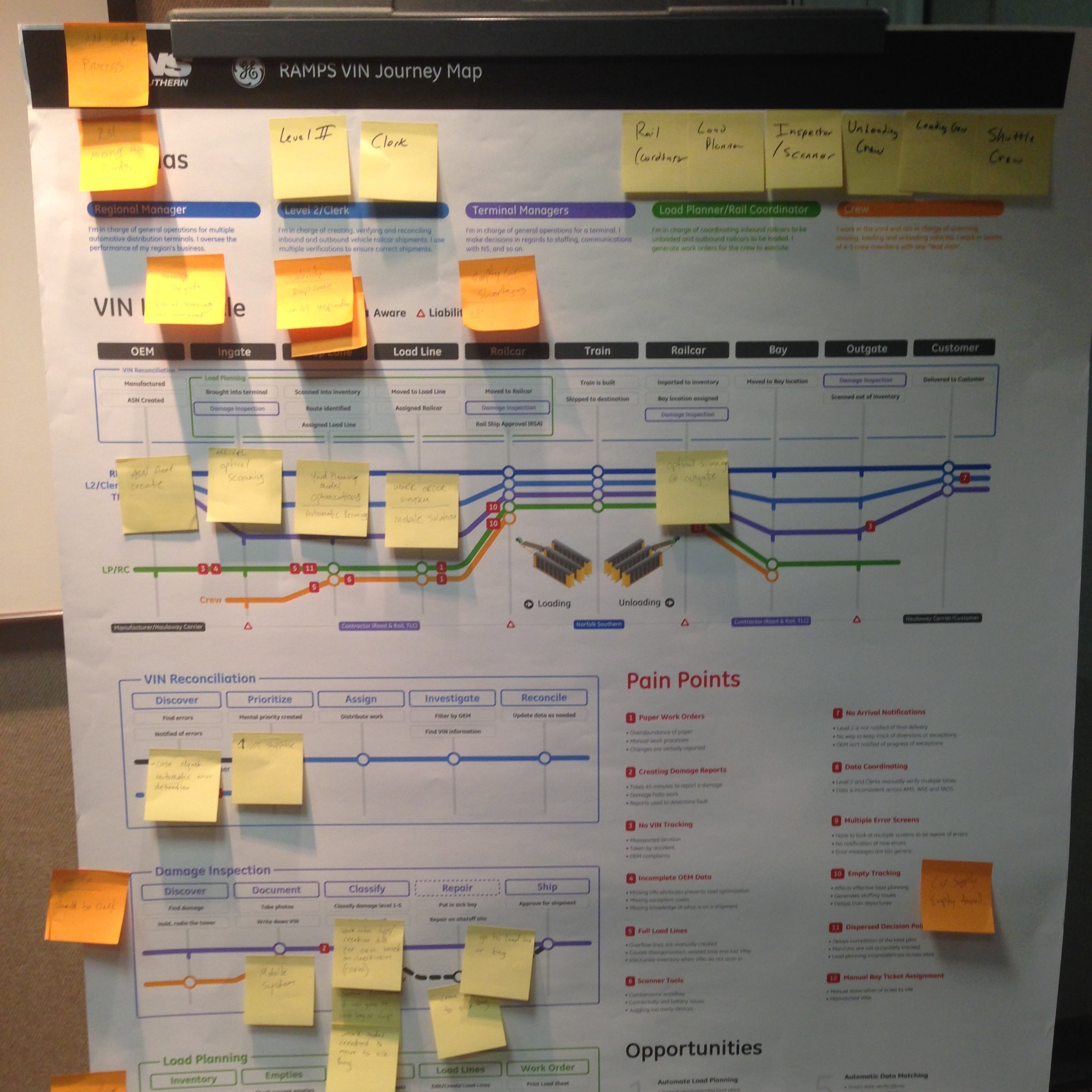
SMART AUTO TERMINAL
Transforming Automotive Shipping through a Design-Led Approach
Smart Automotive Terminal
Reimagining the automotive shipping process was not for the faint of heart. Initial user research showed no standard process throughout the entire network of automotive terminals, leading to a bottleneck in communication and on-boarding new employees. In-depth user research and discovery was the only way to map out the complexities and variations of each terminal, in each customer, in order to synthesize the common procedures and create a flexible workflow to work for everyone.
The Process
This project focused heavily on upfront product and ecosystem strategy, as we were redesigning an entire workflow and toolset, not just a software product.
Discovery
Upfront discovery started with stakeholder interviews of internal stakeholders, customers, users of the future product, and third-party partners impacted by the product and workflow. Once I had a broad understanding of the goals of the product, I facilitated a workshop to ensure all business stakeholders were aligned. Together, we aligned on a vision statement to serve as the product North Star, then mapped out who the key personas were, and their current journey map. These outputs gave me a framework for discovery research—what questions to ask, and what assumptions to validate.
I visited several automotive terminals across the country to better understand how work is divided and completed. Through task observation and contextual inquiries, I was able to map the current workflow to validate the earlier journey map sketched out by our stakeholders.
Journey map notes after a ‘walk the walls’ session with stakeholders.
Define
My findings highlighted pain-points across the entire shipping network. I observed data transfer issues, communication challenges, technology breakdowns, and process mismatch, setting up key partners for failure. I summarized all my findings in a detailed research report, complete with personas, journey maps, and actionable insights for the team to better understand the challenges at hand.
One of the storyboards from a co-creation workshop.
I then assembled key stakeholders for a ‘walk the walls’ workshop where we immersed ourselves in all the research outputs—photos, videos, synthesized personas and journey maps, etc.. I encouraged participants to use post-it notes to clarify or correct research findings as needed. These insights were later incorporated to create artifacts the entire team could use as reference materials.
I held several co-creation workshops with various groups of users to capitalize on institutional knowledge and get a jumpstart on potential solutions. We ideated on everything from changes to work streams and journey maps to end-user screens and types of hardware devices. The ability to leverage expert users that experience these problems everyday enabled myself and the entire team to accelerate solution design and validation efforts. This is key when tackling wicked problems.
Design
The design phase focused on three levels—ecosystem, workflows, products.
At the ecosystem level, a service blueprint was created, showcasing all the overlapping processes, workflows, workers, and software systems. This helped everyone visualize the entire ecosystem, ensuring nothing was forgotten, and make sure each piece fit together.
The future service blueprint, showcasing all levels of our solutions.
At the workflow level, I mapped each core task for every primary persona. With a solution of this scale, almost every persona’s workflow was being optimized to take advantage of the new systems and software products being developed.
At the product level, in-office (desktop and large-screen) and in-field (mobile) applications were created. I delivered iterative designs, validating with users and increasing fidelity with each revision. This ensured we were able to hone in on showing the right data and the right time, to the right people.
Evolve
With such a large engagement, it was necessary to work delivering on the product roadmap incrementally, and continue delivering focused value for developers at each step. This means every three to six months, I was able to incorporate usability feedback along side initial discovery research, feeding new insights into the backlog for product improvement.
The Deliverables
service design
A series of documented workflows were prescribed to our customer. These workflows also enable potential customers to quickly survey our products to understand how they might implement into their existing systems.
desktop
In-office applications focused on inventory management and task orchestration. Working in concert with engineering teams, we delivered high-fidelity prototypes with detailed redlines linking design components to our design system documentation.
mobile
The mobile application focused on task execution and vehicle tracking. These mobile designs were the first of mobile design system, meaning we delivering prototypes and wrote design system documentation at the same time. This allowed developers to give us real-time feedback on the design system and related docs.
agile development
Large-scale projects like this means there are a lot of moving parts. One of the things I did early on was establish a working rhythm with agile engineering teams to ensure design was incorporated as a first-class citizen in the project, without becoming a bottleneck.
This project serviced as the testing ground for my Design at Scale framework. We hosted strategic alignment workshops every 6 months, first with internal stakeholders then with customers. That strategy was turned into reality through tactical planning sessions quarterly, mapping out all sprint tasks for engineers and designers for the next three months.
Read more
Smart Automotive Terminal (SAT)
Built on GE’s Predix™ platform , SAT provides broad capabilities, including Shipment Management, Railcar Management, Case Management and Inventory Management.
The result? Improved operations through optimized tactical planning, load planning, and ramp operations. Increased service quality, communications and productivity.
📓 Download GE Transportation’s datasheet on Smart Automotive Terminal.
My Role
This project had been initially kicked off with a product and development team for a month or two before I got involved. But little strategy or user experience work had been done before hand. I had to quickly balance delivering short-term design deliverables for a growing engineering team as well as mapping the long-term strategy and prioritizing roadmap outcomes at a product strategy level.
I led all strategy, research and screen design efforts for both desktop and mobile for over a year. As the timeline and scope increased, so did the team. I then moved into a manager role, overseeing team growth, as well as the process and quality of this project.



